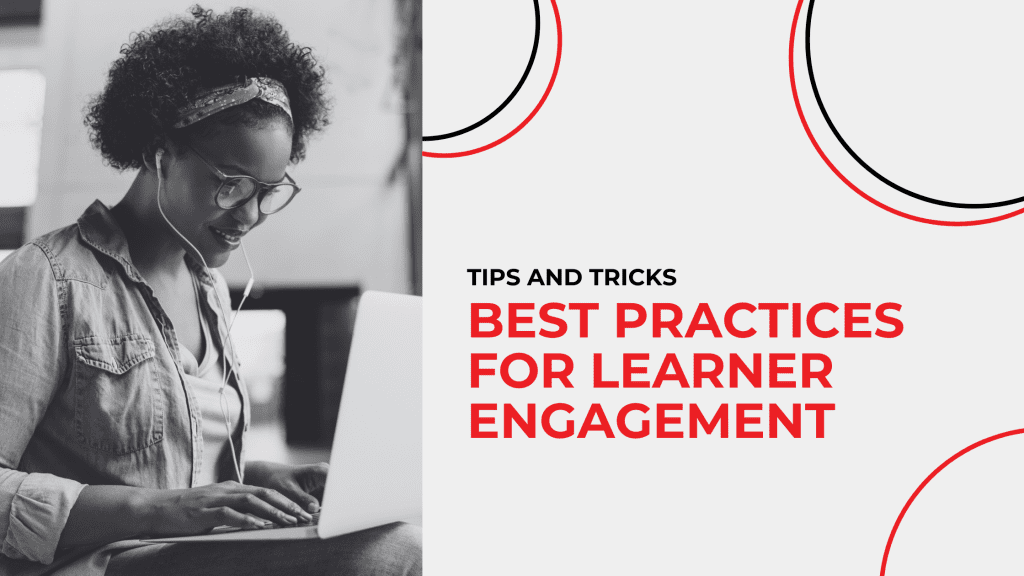
eLearning has become a cornerstone of education and professional development in today’s fast-paced environments. As the demand for online courses and training programs grows, so does the need for effective instructional design. Instructional design, often with the help of an instructional design company, is the process of creating educational experiences that make the acquisition of knowledge and skills more efficient, effective, and engaging.
Join us in this blog post as we delve into strategies that capture learners’ attention, sustain their interest, and facilitate meaningful learning experiences.
Understanding Learner Engagement
Learner engagement is the measure of a learner’s involvement, interaction, and commitment to the learning process. It’s a crucial component of effective instructional design, as higher engagement often leads to better retention, comprehension, and application of knowledge.
The Importance of Engagement in the Learning Process
Engagement is pivotal for several reasons:
- Retention: Engaged learners are more likely to remember what they’ve learned.
- Motivation: Engaging content can inspire learners to continue their education journey.
- Performance: Higher engagement levels often correlate with improved performance and outcomes.
- Satisfaction: Engaged learners typically report higher levels of satisfaction with their learning experiences.
Best Practices for Learner Engagement
Creating engaging eLearning content requires a strategic approach to instructional design. Here are some best practices to ensure your content captures learners’ attention and fosters meaningful learning experiences.
Know Your Audience
Understanding your learners is fundamental to designing effective eLearning content. Consider their needs, preferences, backgrounds, and learning styles. Techniques for gathering audience insights include:
- Surveys and Questionnaires: Collect data on learners’ prior knowledge, goals, and preferences.
- Interviews and Focus Groups: Engage directly with learners to gain deeper insights.
- Analytics: Use data from previous courses or learning management systems to identify trends and behaviours.
Set Clear Learning Objectives
Clearly defined learning objectives provide a roadmap for both the instructional designer and the learners. Effective learning objectives should be:
- Specific: Clearly outline what the learner will be able to do.
- Measurable: Include criteria to assess whether the objectives have been met.
- Achievable: Ensure objectives are realistic given the course’s scope and learners’ prior knowledge.
- Relevant: Align objectives with learners’ needs and the overall goals of the course.
- Time-bound: Specify the timeframe within which the objectives should be achieved.
Varied Instructional Methods
Diverse instructional methods cater to different learning styles and keep the content interesting. Consider incorporating:
- Training Videos and Animations: Visual content can simplify complex information and maintain engagement.
- Interactive Quizzes: Periodic quizzes reinforce learning and provide immediate feedback.
- Discussion Forums: Encourage peer-to-peer interaction and collaborative learning.
- Case Studies and Scenarios: Real-world examples help learners apply knowledge in practical contexts.
Interactive Content
Interactive elements enhance engagement by actively involving learners in the learning process. Examples include:
- Drag-and-Drop Activities: Allow learners to match items or sequence steps in a process.
- Simulations: Provide a safe environment for learners to practice skills and make decisions.
- Branching Scenarios: Offer different pathways based on learners’ choices, enhancing decision-making skills.
Apply Principles of Adult Learning Theory
Adult learners have unique characteristics and preferences. Incorporate these principles into your design:
- Self-Direction: Allow learners to have control over their learning paths.
- Relevance: Ensure the content applies to learners’ personal or professional lives.
- Practicality: Focus on real-world applications and problem-solving.
Design for Accessibility
Accessible content ensures that all learners, including those with disabilities, can engage with the material. Guidelines for creating accessible content include:
- Use Alt Text for Images: Describe images for learners using screen readers.
- Provide Transcripts and Captions: Make audio and video content accessible to all.
- Follow WCAG Standards: Adhere to the Web Content Accessibility Guidelines for comprehensive accessibility.
Provide Opportunities for Feedback and Reflection
Feedback and reflection are critical components of the learning process. Techniques include:
- Peer Reviews: Allow learners to review each other’s work and provide constructive feedback.
- Self-Assessment: Encourage learners to evaluate their progress and identify areas for improvement.
- Instructor Feedback: Offer timely and specific feedback to guide learners’ development.
Work with a Leading Instructional Design Company
Anderson Studios’ team of specialists combines creativity, technology, and instructional design principles to deliver exceptional educational experiences.
With years of experience in the industry, we excel in producing high-quality eLearning materials. Our team includes instructional designers, video producers, animators, and motion graphics experts who collaborate to create content that captivates and educates.
At Anderson Studios, we understand that the digital transformation of static learning materials is crucial for staying relevant in today’s dynamic educational landscape. Our expertise lies in converting traditional, static content into engaging and interactive eLearning experiences.
Contact Us Today
Get in touch with Anderson Studios today to discuss your project and discover how we can help you create engaging, effective, and inspiring learning experiences.

